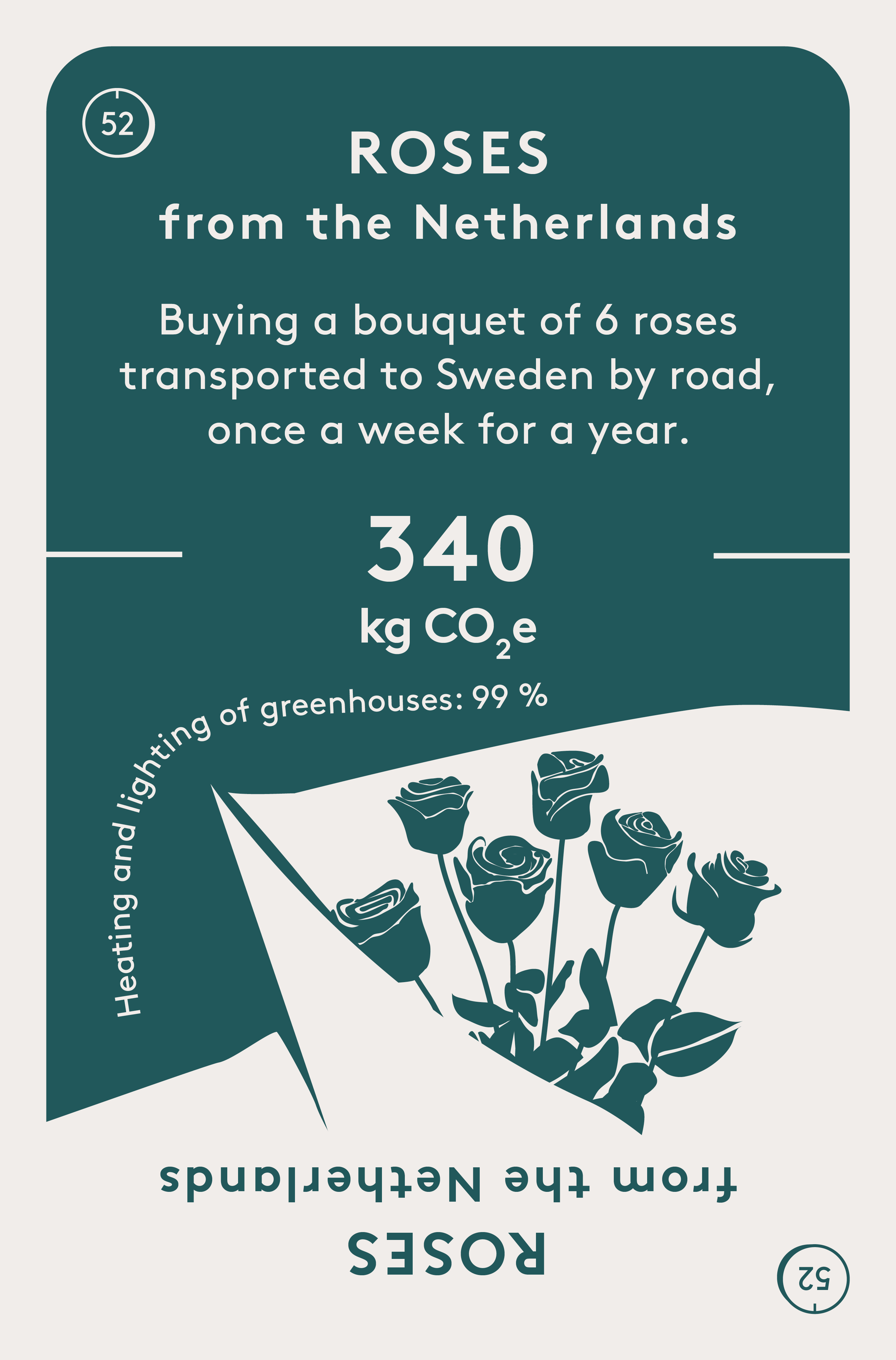ROSES
from the Netherlands

FOLLOW OUR CALCULATION
Click the expendable headlines to look at each step of the calculation.
The roses are cultivated in a greenhouse in the Netherlands and transported to Sweden by truck. To calculate the greenhouse gas emissions, we have included emissions from the consumption of electricity and natural (fossil) gas in the greenhouse in the Netherlands, as well as emissions from transportation. Electricity and gas are primarily used for heating and lighting in the greenhouse. The following data has been used to calculate emissions from cultivation:
- Number of roses per bouquet: 6
- Electricity consumption for cultivation: 8.2 MJ per rose
- Natural (fossil) gas consumption for cultivation: 7.4 MJ per rose
- Emissions from electricity: 73 g CO2e per MJ (average in the EU in 2021 based on data from Ember’s Yearly Electricity Data)
- Emissions from combustion of natural (fossil) gas: 64 g CO2e per MJ
The energy use for growing the roses is calculated by multiplying the consumption of electricity and gas per rose by the number of roses per year. The calculation shows that 2 558 MJ of electricity (8.2 MJ of electricity per rose × 6 roses per bouquet × 52 bouquets per year) and 2 309 MJ of gas (7.4 MJ of gas per rose × 6 roses per bouquet × 52 bouquets per year) are used to grow the roses.
The greenhouse gas emissions from the consumption of electricity and gas used in cultivation are calculated by multiplying the total consumption of electricity by the emission factor for electricity, and the total consumption of natural (fossil) gas by the emission factor for gas. The calculations show that the emissions amount to 334 kg CO2e (2 558 MJ × 73 g CO2e per MJ + 2 309 MJ × 64 g CO2e per MJ). Emissions related to fuel consumption for machinery and production of inputs used in cultivation, such as nitrogen fertilizer, are not included.
The roses are transported by truck from the greenhouse in the Netherlands to a flower shop in Stockholm, Sweden. The truck is powered by diesel. The following data have been used to calculate the emissions from transportation:
– Weight per rose: 32 g (roses from the Netherlands are slightly heavier than roses from Kenya according to our measurements).
– Transportation distance: 1 500 km (distance between Amsterdam and Stockholm)
– Energy consumption for transportation by truck: 1.8 MJ per ton and km
– Emissions from combustion of diesel: 89 g CO2e per MJ
The energy consumption is calculated by multiplying the total weight of a year’s consumption of roses (10 kg) by the energy usage for truck transportation and the distance. The calculation shows that the energy consumption amounts to 27 MJ (10 kg × 1.8 MJ per ton and km × 1 500 km).
The greenhouse gas emissions from diesel consumption are calculated by multiplying the energy consumption of truck transportation by the emission factor for diesel combustion. The calculation shows that truck transportation causes emissions of 2 kg CO2e (27 MJ × 89 g CO2e per MJ).
The total emissions are calculated by adding the emissions from growing the roses to the emissions from transportation. The calculation shows that the total emissions amount to 336 kg CO2e per year (334 + 2 kg CO2e), which has been rounded to 340 kg CO2e on the card.
See more card calculations: